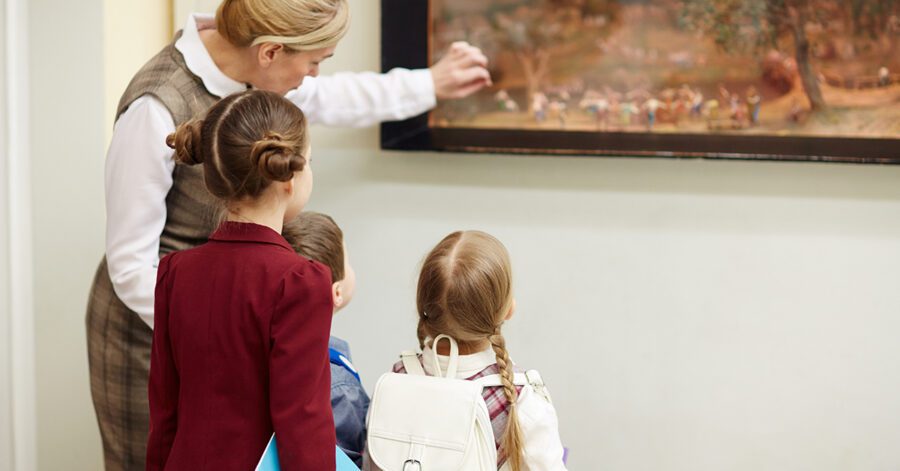Using the classical skills of learning, you can help your children find God in art through appreciation, imitation, and reflection. Read on to discover how.
Teaching art in your homeschool is about more than crayons and craft time. It’s an invitation to slow down, to see beauty, and to discover the fingerprints of God in creation and creativity. But many parents wonder how to find God in art—how to help their children not only observe fine art but also respond to it with wonder and worship.
In this article, homeschool mom and Classical Conversations Director Emily Martin shares how attending, imitating, and reflecting can shape the way we experience art. With practical ideas and spiritual insight, she invites families to see art as more than a subject—it’s a path to knowing God more deeply through truth, goodness, and beauty.
Christian Art Education Begins with the Creator
When my children were toddlers, they would sit in the bathroom with me while I was getting ready for the day. They would reach their little hands up to the counter, find my makeup brushes, and pretend to put on makeup.
Other times, I would find them at the piano playing their made-up songs until their hearts were content and my ears were full. Almost daily, they would pull up a chair and cook with my husband and me while we made meals together.
Be Imitators of God
It is said that the sincerest form of flattery is imitation. But more than flattery, imitation is the natural way students learn from their parents and Tutors. As children of God, we should be imitators of God (Ephesians 5:1). We may think about imitating God through our actions, character, and love, but another unique human imitation of God is the appreciation and creation of art.
In the beginning, God created the world. He created the insects, birds, fish, mammals, and humans. God created the sunsets, trees, flowers, and oceans. Everything our eyes and ears can behold comes from the Creator of the universe.
As humans, we are uniquely equipped to appreciate God’s creation, unlike the animals that inhabit our planet. We are set apart as children of God to not only appreciate God’s gift to us, but to be able to replicate it. We can replicate creation and imitate God through our works of art.
Read how to Cultivate the Habit of Attending
Faith and Art in the Homeschool: A Natural Union
Art can be appreciated, replicated, and studied in many different ways. Some of the ways we see this in Classical Conversations are through attending to artwork, creating art, and studying art history. Through it all, we see God and learn how to imitate Him through our studies.
Fine arts, such as sketches, paintings, or sculptures, are visually appreciated. They are compared to Performing arts, such as music, dance, and theater.
I usually think of large and beautiful paintings when I hear the term, fine arts. How often do we see paintings of stunning landscapes, sunsets, or flowers? The artist took the time to attend to and appreciate his surroundings, which enabled him to replicate what he saw. He was able to imitate God with every choice of color and every brush stroke.
Psalm 19:1 says, “The heavens declare the glory of God; the skies proclaim the work of his hands.” (NIV)
God created an abundance of rich and beautiful colors within the sky. We can gaze at the colors of our vast world to see God in them.
Classical Art Study in a Christian Framework
From Foundations to Challenge, we instill in our children the importance of fine art. At a young age, students are introduced to great artists such as Rembrandt, Degas, Michelangelo, and Van Gogh. When our students imitate these famous artists, they see how God blessed each with a unique talent. God gave the artists the special gift of appreciating the world around them and replicating His creation for the enjoyment of others.
As our children engage in art, they can view God’s creation through the lens of the artist, enabling them to gain a deeper understanding of how God spoke to that artist. When our students attend to art, they can travel to parts of the world they haven’t seen before to get a glimpse of unknown places, but project the vastness of creation.
Foundations students may take in a desert landscape by Georgia O’Keeffe in Cycle 3 or survey a quaint countryside by Claud Monet in Cycle 2. Attending to art is so much more than looking at a picture; it is an opportunity to show our students the greatness of creation through picturesque works of art and the hands of those who imitate Him.
 .
. 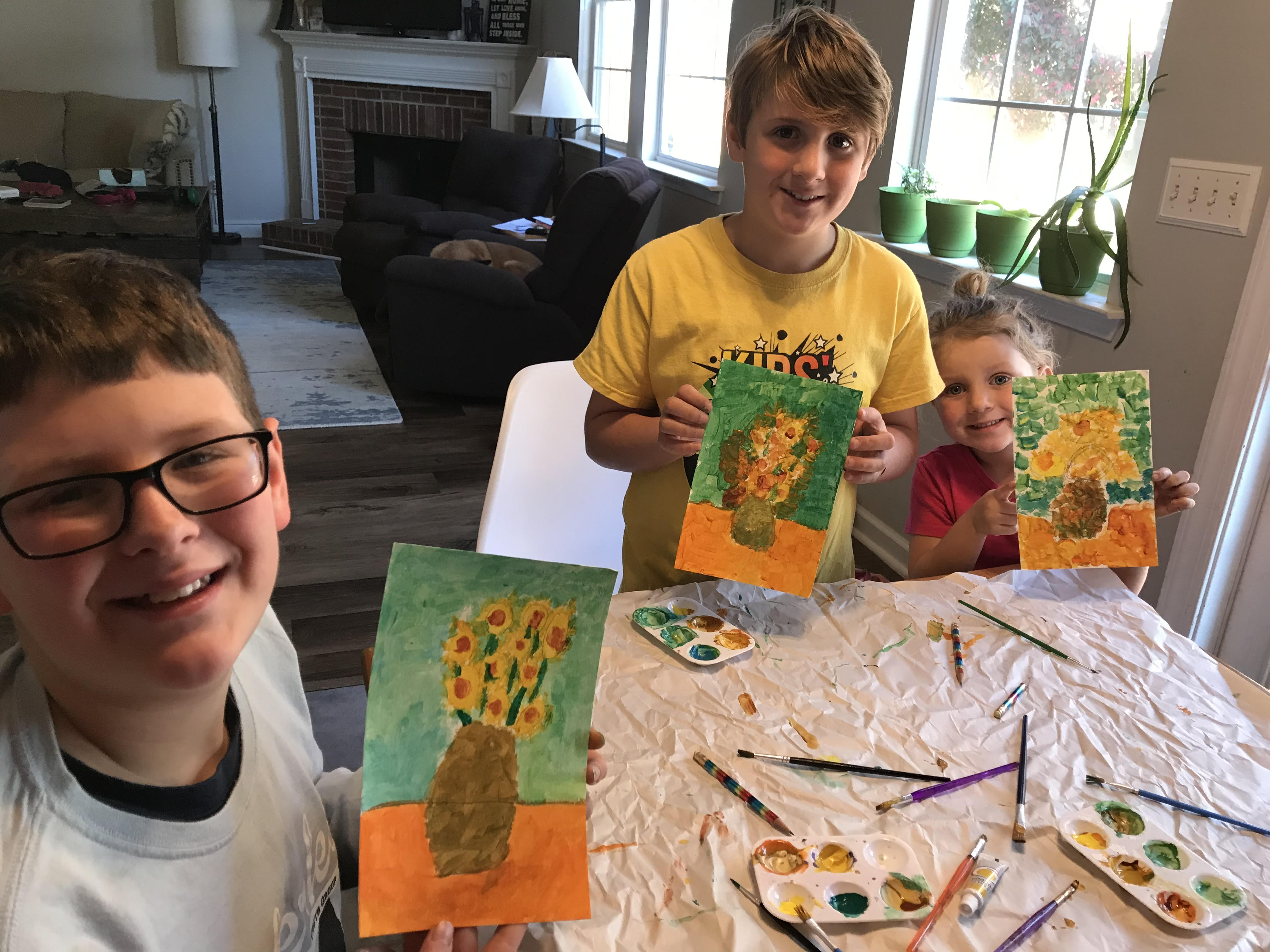
Imitate the masters with Discovering Great Artists
Christian Worldview Art: Seeing the World Through God’s Eyes
Beyond attending to works of art, Foundations students are allowed to mimic the painting style of a famous artist. We teach our students to study beautiful paintings and sculptures to see God and imitate Him in the creation of fine art.
When we encourage them to practice science through sketching a leaf, they can see the fine details in the leaf. They can appreciate that God didn’t just create the tree but also created the minute details that make up even the tiniest of leaves.
Through the expression of art, our students see that the world is composed of thousands of colors, tones, patterns, and shapes. When our students sketch, draw, or paint, they observe that God didn’t put this world together haphazardly, but with detail, order, and immense beauty.
When our students are the artists, we as parents have the amazing opportunity to see the world as our children see it; to discover what is important to them. God not only created the world around us but also created our children to be imitators of Him. Through their brushstrokes and color palette, they imitate their heavenly Father and the masterpiece He made for them.
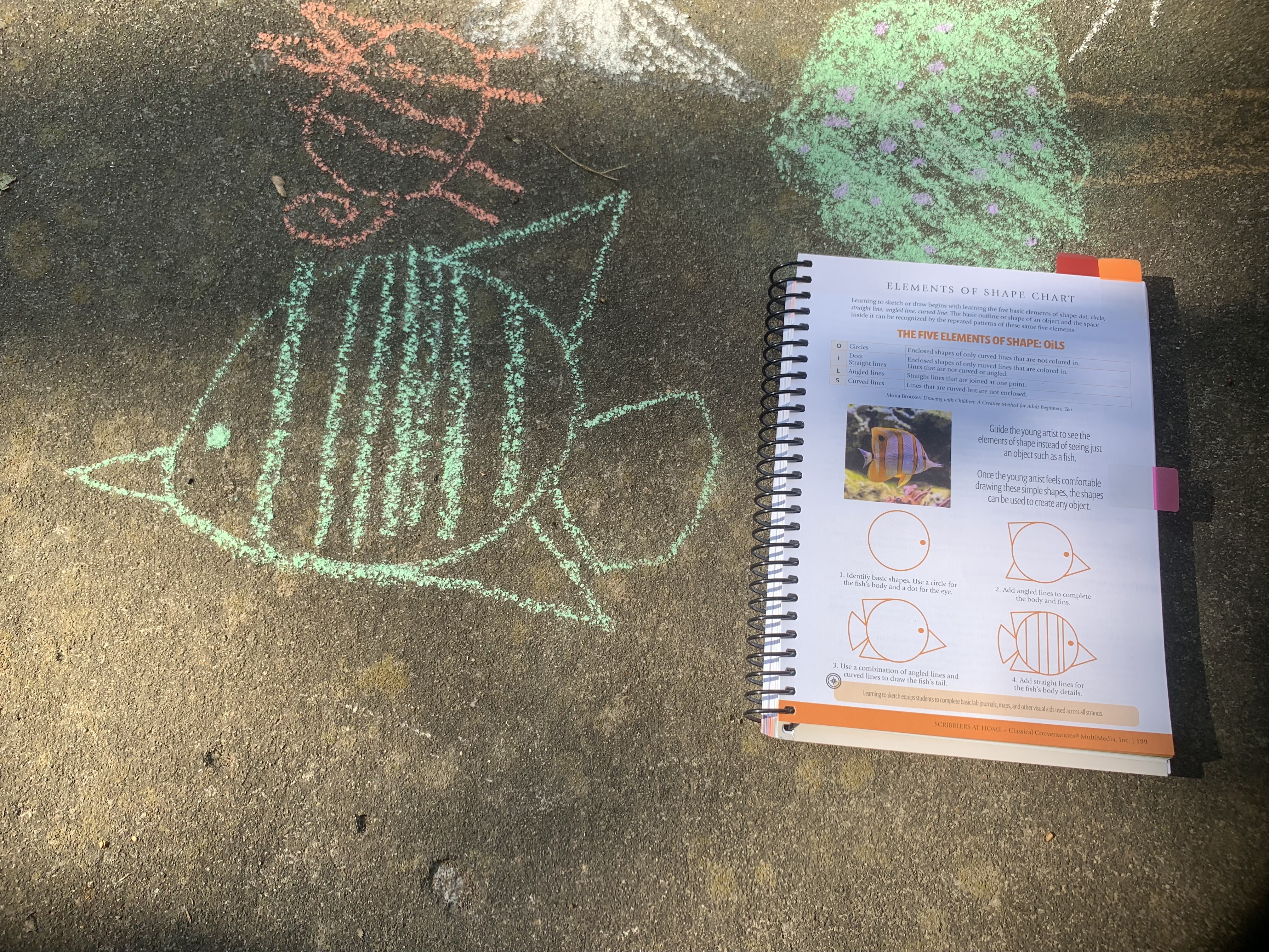 .
. 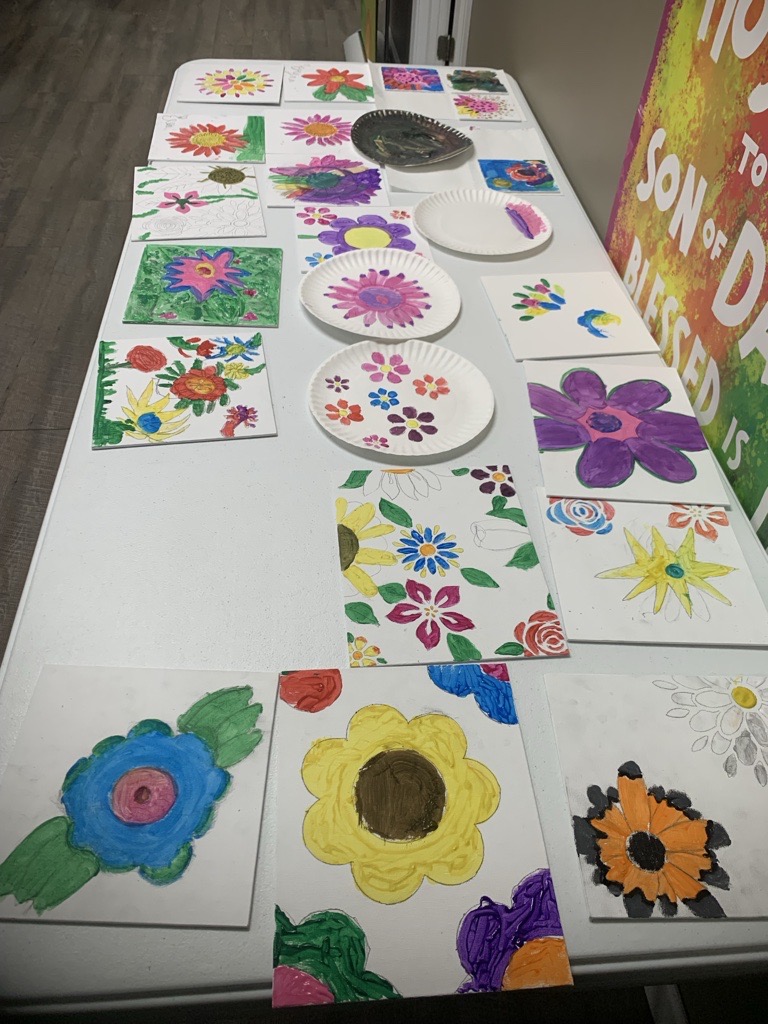
Learn new drawing techniques with Drawing with Children
Spiritual Formation Through Art History and Technique
As student mature and enter the Challenge years, their understanding of the world around them deepens. The skill of attending to art transitions to replicating it and, finally, studying the intricacies of the work and its importance in the art community.
Challenge students, specifically in Challenge II, discuss patterns, color choices, composition, and historical context. Many of these paintings record critical stages of church history and give us a greater insight into our past; some even depict scenes from the Bible.
When students study these great works, it provides an opportunity for a conversation about the significance of that particular story and how we can see God in it. Without the fine arts, we would have little to no knowledge of what the world looked like hundreds or thousands of years ago. We would have little information about the role of Christianity in the homes and the lives of the common man.
God worked through the artists to send His message into the world every time an artist painted a cross, depicted Jesus, or told a story from the Bible. These artists imitated God by telling His story through their art.

Dive deep into fine art with Marvelous to Behold
Practical Application: How to Teach Art with Purpose at Home
How can homeschool parents nurture spiritual formation through art in simple and meaningful ways? Here are six ways to practice finding God in art:
1. Teach Your Child to Attend to Artwork
- Choose a classic painting, sculpture, or nature scene and spend time quietly observing it together.
- Ask: What do you notice first? What stands out? What feelings does it stir?
- Guide them to see how the artist might be reflecting God’s creation or truth.
2. Encourage Creative Imitation with Meaning
- Have your child imitate part of a masterwork or create something from nature.
- While they work, talk about how their creation mirrors the creativity of God.
- Affirm the value of their perspective and how it reflects God’s image in them.
3. Integrate Art History with a Biblical Lens
- Explore the lives of artists who told spiritual stories through their work.
- Study the cultural and religious context of iconic paintings.
- Invite discussions about worldview: What truths or values does this piece reflect? How does it point to or contrast with Scripture?
In all these practices, art becomes not only a tool for expression but a pathway to discipleship.
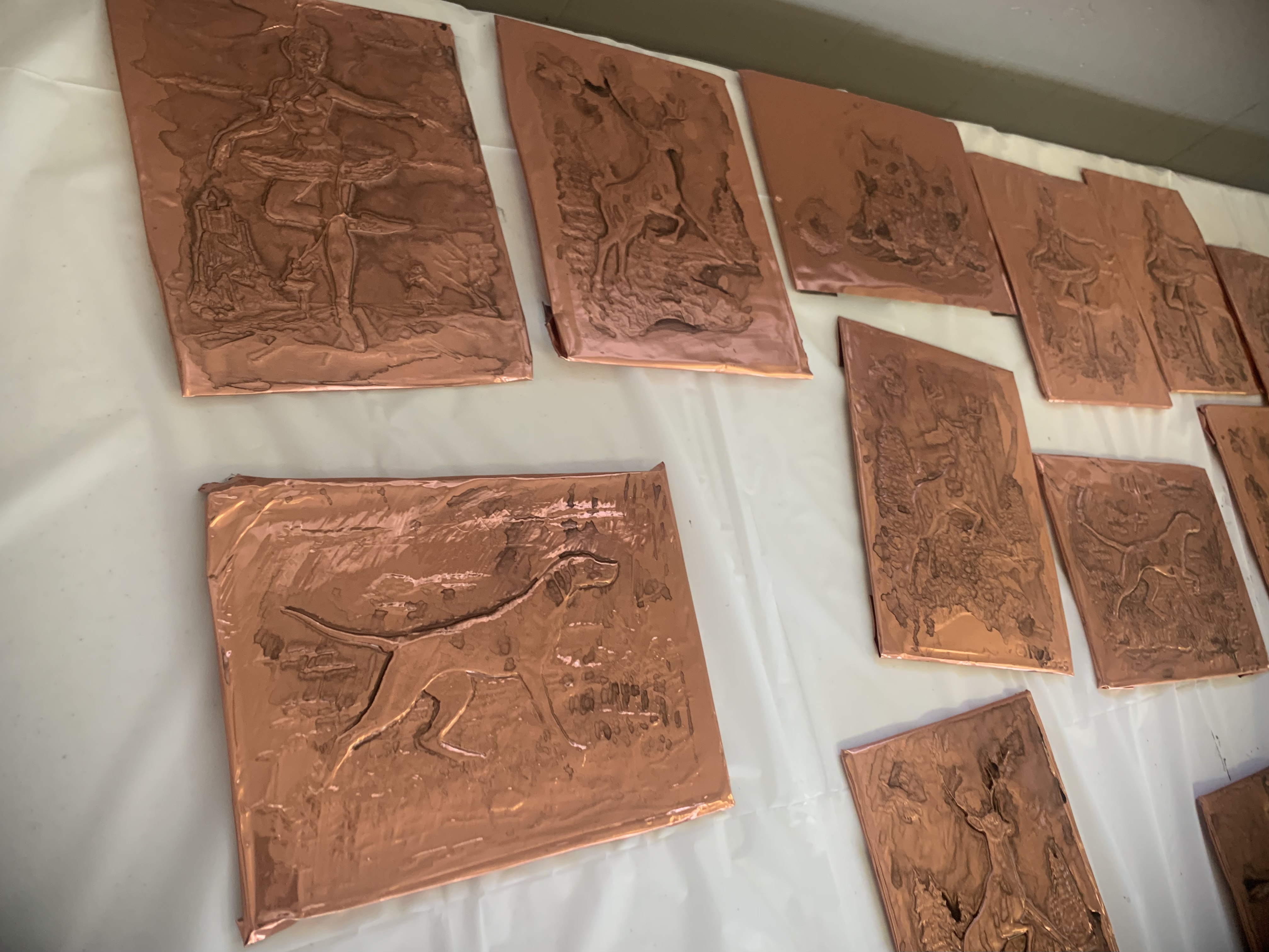
Reflecting Christ Through Creativity
Just as our children imitate us, we should imitate God. God created beauty to send His love into the world. We can create beautiful works that also reflect God’s love into the world. Why should we, in Classical Conversations, study the arts? We study the arts to imitate Christ. When we imitate Christ, our Love for Him is reflected in our works and points others to Him.

